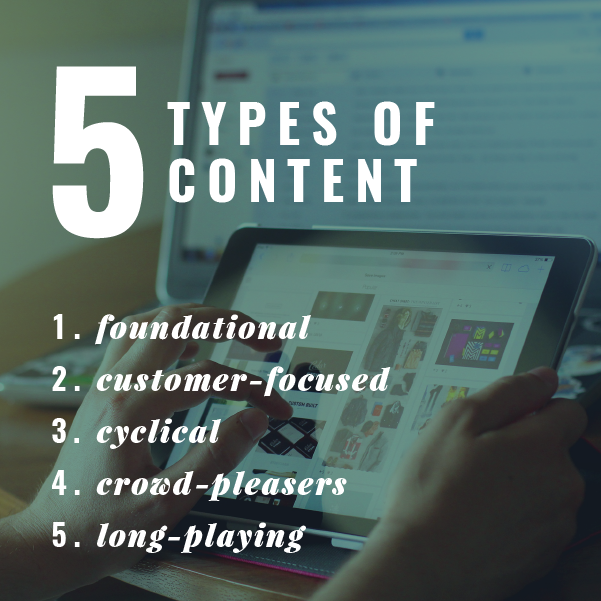Do you have a blog on your website? Do you know how to optimize the value and shareability of your blog posts?
When it comes to content marketing, it’s important to be adaptable.
To grow your audience online, you need to be open to trying new tools and tactics.
When it comes to content marketing, it’s important to be patient.
The rapid changes in the blogosphere make it harder and harder to generate eyeballs and attention for your content.
Lastly, as a content marketer, you need to put yourself in the shoes of the reader.
To create blog posts that are loved and shared, you need to think about what your audience wants.
In this blog post, I’ll cover the importance of using your blog to create value and the different types of content to create. I will also detail the anatomy of the “perfect” blog post.
Getting started:
Before we talk about how to create value or structure your content, let’s talk about what to write.
There are tons of ways to brainstorm what to write about.
I recommend using feedback and questions you’ve received on social media, trending topics in your industry, and breaking news.
I keep a notebook of all of my blog post ideas, so I never have to “start from scratch.”
Once you have a list of ideas, you can start to organize them and plan out how often you’re going to write.
Creating value:
There are so many different types of valuable content that you can create for your blog.
Heidi Cohen shared 5 core content types as part of her Content Marketing Workshop as part of Social Media Marketing World 2016.
The 5 types of content are:
- Foundational: Think epic, long-form posts on topics that you want to be known for. For me, these are my posts about content editorial calendars and/or getting started on Periscope. Tip: Take time to create a few great pieces of this type of content as a way of showcasing your skills to your audience.
- Customer-focused: This is when you put yourself in the shoes of your reader. It’s all about providing value to your fans. Answer commonly asked questions, share how-to guides, testimonials, and product reviews. Tip: Share customer success stories as a way of tapping into emotion and driving action.
- Cyclical: This is content that you can create without a tremendous amount of effort. Recap a news story or share your opinion on a new tool or technique in your industry. Tip: Consider interviewing influencers in your industry as a way of providing value in a more personable, informal way.
- Crowd-pleasers: These posts are more list-based. They tend to be shorter. Think – round-ups of resources, listicles forecasts, and predictions. Tip: Keep a list of influencers and resources in a Google Doc that you can refer to when you need to create a post of this type in a pinch.
- Long-playing: This evergreen content can be shared months or years after publication. These posts take effort but are well worth it. Tip: Dedicate a decent amount of time to promoting these types of posts, as they never “lose” their value and make for great stuff to share on social media.
Creating diversity in your blog will pay off in the form of views and shares, as everyone is different.
Some readers may love your long-playing content, whereas others might always be looking for the customer-focused stories.
Regardless of the type, the structure is critical.
The anatomy of a perfect post:
The structure of your blog post is the single most important factor to getting people to read the entire post.
Without a proper structure, the blog won’t be easily found, consumed or shared.
The anatomy of a perfect blog post includes a headline, introduction, body content and conclusion.
Let’s break down the elements in detail:
- Headline: You’re going to use this to hook people and grab attention, so be specific. Use keywords to help the blog perform on search. You should spend as much time on the headline as you do on the entire post. Use CoSchedule’s Headline Analyzer tool to create terrific titles.
- Introduction: The intro should be short and powerful. It draws readers into the content. I recommend identifying their needs, and including a compelling statistic or a question that your target audience would answer “yes” to.
- Body Copy: Your content should be engaging, informative and valuable. Use quotes to inspire or help convey a point. Tell stories, use interesting facts and figures, and make claims that you’re able to back up. Use sub-heads and visuals to break up the content to make it more readable.
- Conclusion: This is where you hammer home the value you’ve created in the post. Repeat your main takeaways and leave the reader inspired and ready to take action. Include a call to action at the end to drive readers to do something – whether it’s reading another article or opting in for your free guide.
Your content should educate, inspire or entertain. Make it simple, easily digested and optimized.
How to optimize your content:
Without optimization, your content won’t be found.
If your content isn’t found, it sure as hell won’t be shared.
Include a keyword phase, imagery, meta-data and links to other content to help it perform better on search engines.
However, don’t just optimize your content for search.
Optimize your content for humans too. (I mean, they’re the ones actually consuming it.)
To do this, make the content mobile-friendly. Also, improve scannability by incorporating imagery and bulleted lists to break up chunks of content.
Conclusion:
Having a blog is a marathon, not a sprint.
To create a community of loyal readers, you need to invest time, creativity, energy, and patience.
When you create value in a multitude of formats and know how to optimize your blogs for both search and humans, you’re on your way to growing the audience and authority of your blog.
Want to take the next step?
Snag my free social media guide to help you get more social shares for your content!







